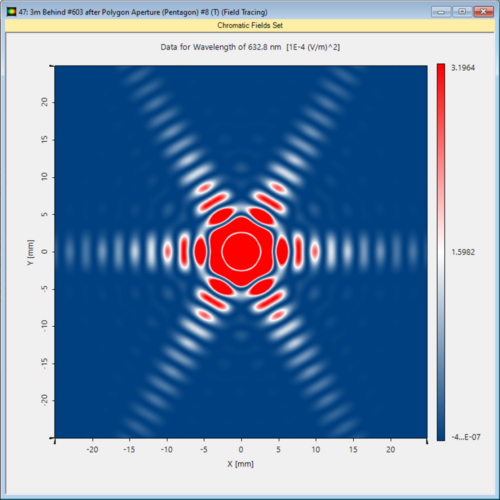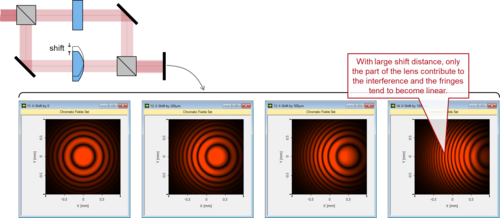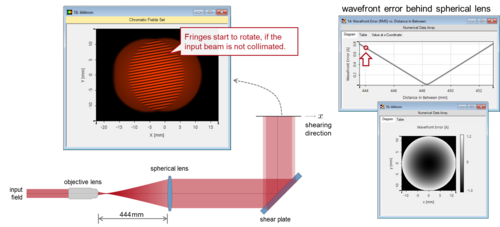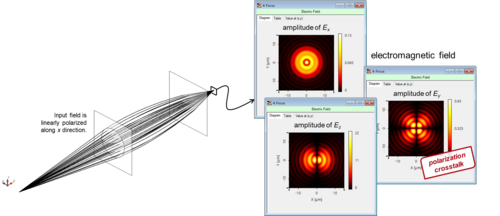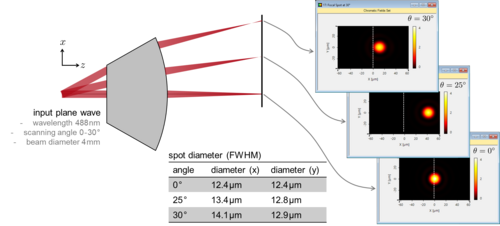What’s new?
VirtualLab Fusion Release 2020.1
We are pleased to announce the VirtualLab Fusion Release 2020.1!
All VirtualLab licenses with update service till 1st quarter 2020 are granted the update to this version.
Automatize Your Simulation Tasks
For the analysis of modern optical devices and systems, engineers often need to execute a large amount of simulations to gather and sort the results, so as to fully study the optical design. To assist with such tasks, VirtualLab Fusion provides a flexible inbuilt programming language, which allows, for example, for the automatic saving of the simulation results. Moreover, it is possible to access VirtualLab Fusion simulations externally (via MATLAB or Python), giving you the full possibility to further analyze the simulation results.
Read moreGeneration of Non-Diffracting Bessel Beams
Nowadays, Bessel-like beams and similar kinds of non-diffracting beams are not just generated in the lab but have been put to use in different applications. To better exploit such beams, their properties must be studied and understood more deeply. As a typical example, we demonstrate how to generate Bessel beams with an axicon, and, following the research work of O. Brzobohatý et al., we investigate how the round tip of the axicon may influence the resulting Bessel beam.
Read moreOne Physical-Optics Platform – Many Field Solvers!
We are excited to present you insights into our software development. We are starting a webinar series and the first webinar will already take place on 27 May.
Stay tuned and register for the first one.
In order to adapt to different time zones worldwide, we will hold this webinar twice (all times CET):
27 May | 10:00 – 11:00
27 May | 16:00 – 17:00
Optical Metrology with Interferometry
Optical metrology is an essential technology for precise measurement. For example, it is often used for surface testing and therefore plays an important role in quality control. VirtualLab Fusion can help you build up various types of interferometers and include the different optical surfaces and components of the system, and even alignment mistakes like tilt and shift, in the simulation. Two widely used interferometers – Mach-Zehnder and Fizeau – are demonstrated as examples.
Read moreCollimation Testing with Shearing Interferometry
How well is a beam collimated? This is an essential question for many optics, especially in laser applications. Shearing interferometry is a simple and convenient way to test beam collimation quality, and we demonstrate this in VirtualLab Fusion. The key device in the interferometer is a shear plate, with high-quality flat surfaces and usually with a small wedge angle. We can model the multiple interactions between light and the shear plate easily with the help of the channel concept in VirtualLab Fusion.
Read moreConstruction and Modeling of a GRIN Lens
In contrast to a traditional optical lens, which works due to light refracting at the curved surfaces of the lens, a GRIN lens can make light focus using only flat surfaces. The flat shape and the working principle of such lenses provide advantages – convenience in mounting and even the possibility of being fused to other devices, like an optical fiber. VirtualLab Fusion provides a fully electromagnetic modeling technology for light propagation in GRIN media. We show here an example of a GRIN lens.
Read moreF-Theta Scanning Lens
F-Theta lenses are often employed in high-performance laser scanning systems. They are designed to produce focal spots whose lateral displacement depends linearly on the scanning angle, a property which is typically required in e.g. laser material processing applications. In VirtualLab Fusion, we provide a scanning source for such scenarios, and with different field solvers used in connection, the performance of such scanning lens systems can be evaluated conveniently.
Read more



